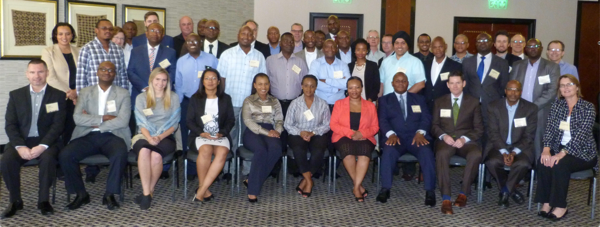There was an estimated $55b billion in cross-border remittances in 2015. But how much of that, per transaction, arrived in the wallet of the intended recipient?
Unfortunately, not as much as many of us would hope. The cost of remittances is quite high with the average cost worldwide nearing 8% in 2015. And in some regions, like the Southern African Development Community (SADC), a region of 15 countries in Southern Africa, the average cost is nearly double that, meaning that for every dollar transferred, nearly 17 cents are consumed as a transaction cost.
Moreover, not all who want to send remittances are able to use financial products or services. They may lack proper identification documents or sufficient funds; they are financially excluded. In the SADC region, 41 million out of the 125 million adults in the region lack access to formal (bank and non-bank) and informal financial services. As a result, they must use other means to send money across borders when needed – methods that are often risky and time consuming.
However, mobile money operators, banks, payments service providers, fintech players, regulators, and multilateral organizations working in SADC have recognized this problem and have taken action to catalyze change by working to drive the costs of cross-border remittances down and to increase access.
The Low-Value Cross-Border Mobile Enabled Payments Project, supported by the Bill & Melinda Gates Foundation, is a multi-year collaborative effort that has made significant progress towards the creation of an interoperable platform that will facilitate low-cost cross-border remittances across the SADC region.

The Low-Value Cross-Border Mobile Enabled Payments Project team
Glenbrook Partners has been fortunate to participate in the project. We’ve even shared posts on mobile money and the project itself along the journey.
Now, in an effort to document and share the abundance of phenomenal work that has been done to date, we wrote the following whitepaper that provides our perspective on the opportunity, the project, the process, and the potential impact. We also drafted an in-depth appendix that outlines the operational, regulatory, technical and commercial decisions, recommendations and repercussions that may be beneficial to regions embarking on similar journeys.
If you’re wondering whether you should read the whitepaper – the answer is yes if you’re interested in:
- Regional payment schemes
- Financial inclusion
- Cross-border remittances
- Interoperability between banks and mobile money operators
- Public-private sector industry collaborations
- Payments development in Africa.
What do you think of the project? In what ways will it foster financial inclusion in the SADC region? We look forward to your input.


